 FOUR YEARS ago, as the mayor's race moved into the spotlight on Labor Day weekend, the Chronicle’s editorial board presented its "10 ways to improve San Francisco."
FOUR YEARS ago, as the mayor's race moved into the spotlight on Labor Day weekend, the Chronicle’s editorial board presented its "10 ways to improve San Francisco."Their goal was to provide a framework for an endorsement process: to compel candidates to talk about the issues most important to the city and to evaluate the contenders on overarching visions as well as their specific strategies to address the city's problems. The focus and ambition of Gavin Newsom's agenda - and its alignment with what they saw as the pressing issues of the time – which persuaded the Chronicle that he was the best option in a crowded field in 2003.
The Chronicle is revisiting that agenda - to assess what Mayor Newsom has accomplished.
Since no real candidates stepped up to oppose incumbent mayor, Gavin Newsom, the San Francisco Chronicle will challenge the man who’s already won.
John Diaz writes:
At least two issues have clearly risen on the agenda for San Francisco's leadership: the dramatic reshaping of the downtown skyline, with its ramifications for public safety, traffic and the city aesthetic; and the wave of violent crime, especially homicides, that has afflicted low-income neighborhoods and posed a serious threat to family life and diversity in San Francisco. Four years ago, there was a perception that the much-maligned Muni system was on the mend; today, rider frustration seems to be returning. Some candidates for mayor might also want to include the creation of a citywide wireless Internet network or the retention of the San Francisco 49ers football team on their lists of priorities.
Create an ethical climate:
What we said: Of all the things that will be remembered as hallmarks of Willie Brown's tenure as mayor, few stand out like the odorous scent of corruption and cronyism that emanated from City Hall during the past eight years.
The revolving door of political consultants-turned-lobbyists clamoring for a slice of the civic treasury will be as much as the mayor's legacy as his role in helping to make Pac Bell Park a reality. The patronage politics that Brown mastered during his many years as Assembly speaker in Sacramento came to roost in San Francisco - to such an obvious extent that political opponents have spent the past four years trying to whittle away at his power through ethical reforms and sweeping charter amendments.
Status report: Newsom appears to have ended the Brown-era level of overt cronyism, though some of his early appointments smacked of political expediency and undermined his pledge to enlist the "best and the brightest." His brief affair with his appointments secretary, who was also the wife of his campaign manager, raised questions about his judgment and commitment to maintain basic professional standards.
Care, not politics:
What we said: Notice fewer panhandlers? Has the number of vagrants sleeping in doorways dropped? Despite a $100 million-plus budget and numerous ballot measures, homelessness hasn't faded.
It's a civic outrage, pure and simple. The money, political bloviation and a confusing network of social services has spawned a list of cures that aren't working.
Try this for a change: take the problem away from politicians and the solution-of-the-month club. Not all City Hall-inspired ideas are bad, and the Care Not Cash initiative, endorsed overwhelmingly by voters, remains worth trying.
But the measure applies to only a slice of the homeless world, single adults who make up perhaps a fifth of the problem. How to serve the remaining population needs a fresh look.
Status report: Newsom enlisted Angela Alioto, the former supervisor and a rival in the 2003 mayoral election, to lead the development of a 10-year plan to reduce homelessness. It focuses on the most entrenched homeless people, who tend to have the most serious underlying issues and absorb a disproportionate amount of the available resources.
Reform the police department:
What we said: An honest, well-respected police department is fundamental to the quality of life in any city. There is no question that the overwhelming majority of San Francisco officers are dedicated professionals who serve with integrity and bravery. But a police force is also measured by how it confronts the few officers who abuse their powers.
Regrettably, public confidence in the SFPD has been strained by its response to a series of high-profile incidents, including the notorious "Fajitagate" brawl involving three off-duty officer(including the son of now-Chief Alex Fagan) last November.
Although the city has paid more than $1 million for six wrongful death claims since 1998, none of the involved officers has been disciplined.
Status report: Tracking and overseeing police conduct remains largely elusive, a major failing of Newsom, who has been decidedly cautious about challenging a police culture that is overly tolerant of officer excesses. For example, the city recently enhanced its computerized system of identifying problem officers - but expressly prohibited that central database from being used for disciplinary purposes.
Help our public schools:
What we said: The outrageous shenanigans that transpired under the rule of former Superintendent Bill Rojas and his meek school board has disappeared under new schools chief Arlene Ackerman. But the cleanup continues - as it will need to for years to come.
Ackerman is rightly seeking to polish the district's reputation and regain the confidence of middle-class parents who have fled the city in search of more affordable housing and better schools. To that end, she had gotten some results - academic performance test scores have seen modest gains in the past few years - one of the few large urban school districts that can make that claim.
Status report: Ackerman's departure led to the hiring of Carlos Garcia, who is off to a promising start. He has the near-unanimous support of the school board and background as a big-city superintendent. Serious problems remain: What can the city do to halt a slide in enrollment and bring Latino and African American students up to performance levels of Asian and white students? The mayor has no control of the schools, but has an important role as an advocate and overseer.
Build more housing:
What we said: Stucco homes facing the Pacific, Victorians dotting steep hillsides and apartments rising above neighborhood stores: these are the benign, comfortable images of San Francisco's housing.
But this postcard world won't work anymore. The city has already begun to move away from this frozen, idealized world, and it's time to accelerate the change. High costs, a changing population and a pent-up demand for housing choices demand it.
The city needs a mix of solutions, not a single approach. The good news is there are plenty of options in a city with a housing-hungry populace.
Status report: The city is in the midst of a housing boom, but it's mostly downtown apartment towers with penthouse prices. Ballot measures to raise housing bond money have failed, leaving City Hall to squeeze each major project for an extra amount of below-market units. It's a haphazard method.
Big projects lie ahead: Treasure Island, the former Hunters Point Naval Shipyard, the southern waterfront adjacent the Mission Bay. Making surethere is a balance of housing choices will be a test of mayoral savvy.
Pay more attention to detail:
What we said: In a city of tight-knit neighborhoods, the smallest changes get noticed. A closed store, a trashed-fill lot or changes in branch library hours can generate more heat than civic debate over the homeless or the city budget. (The editorial went on to specifically cite litter, potholes, parking, chain stores, tree planting and volunteerism as areas that needed attention from City Hall.)
Status report: Broken glass from car break-ins shines in street gutters. Litter, graffiti and neglected street plantings are easy to spot. Parking tickets have jumped to $50 for a meter violation. A wider system of bike lanes remains stymied in court. That's the ever-recurring bad news.
But improvements can be found. A 311 one-stop phone service handles and dispatches quality-of-life complaints. Also, for downtown a major street paving program is under way.
Overall, more needs to be done to shine the city's image and make it more habitable and pleasant for residents and visitors.
Stop demonizing business:
What we said: San Francisco holds many dubious distinctions, but the one with the most serious long-term effect is its attitude toward business, which can objectively be described as hostile.
In annual studies, San Francisco has consistently proved to be the most expensive city in California in which to operate a business. It is the only place that has a prohibitive 1.5 percent payroll tax. Many of the town's legislative leaders seem to revel in coming up with off-the-wall ways to add to the fiscal load carried by big and small businesses - which pay 62 percent of all taxes collected by the city.
The payroll tax has proved to be a great disincentive for attracting new businesses, especially in a down economy. The city has lost more than 60,000 jobs in the past two years, which goes even beyond the hit inflicted by the dot-com bust.
Status report: Newsom tried and failed to raise gross receipts taxes with a ballot measure in 2004, leaving the issue dead for now. But there is a living-wage ordinance that has boosted costs, plus a voter-backed measure giving sick leave for nearly all businesses. Still, employment has risen and office vacancy rates have dropped steadily, suggesting businesses are flocking here.
Enforce our traffic laws:
What we said: Driving in San Francisco is punishment. Insurance rates, parking costs, crowded streets and a prevailing anti-car mood make anyone think twice about getting behind the wheel.But the city's official response to the problems of moving around the city is half-baked. Traffic laws are fitfully enforced. Transit-only lanes, supposedly reserved for buses and cabs, are freely used by everyone. Double-parked trucks, goofy "traffic calming" ideas that baffle unprepared motorists and an army of ticket-writing meter-minders add to the misery.
It's time to decide what works best to stem traffic. Once the rules and City Hall are lined up, drivers need to know the score. Confusion will rule until then.
Status report: Red light cameras have cut the problem of light-jumping drivers. The Central Freeway was finally rebuilt 16 years after it was quake damaged. But the city remains car-crowded, dangerous for pedestrians and cyclists, and an extremely difficult place to park.
San Francisco needs to strike a balance between its "transit first" policy and the reality that some people need to drive.
Complete Article: Ten ways To Choose A Mayor by John Diaz.
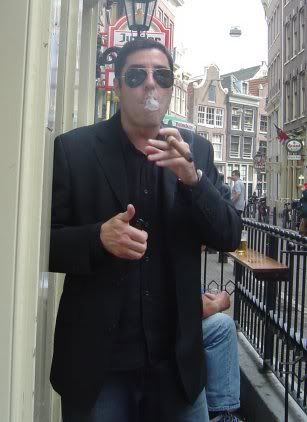


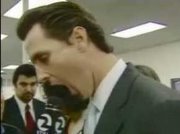


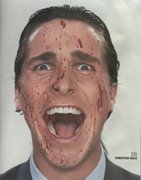
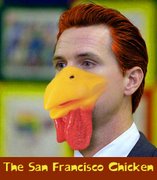


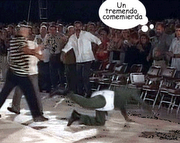
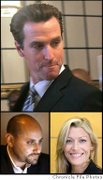


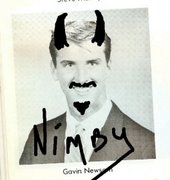

No comments:
Post a Comment